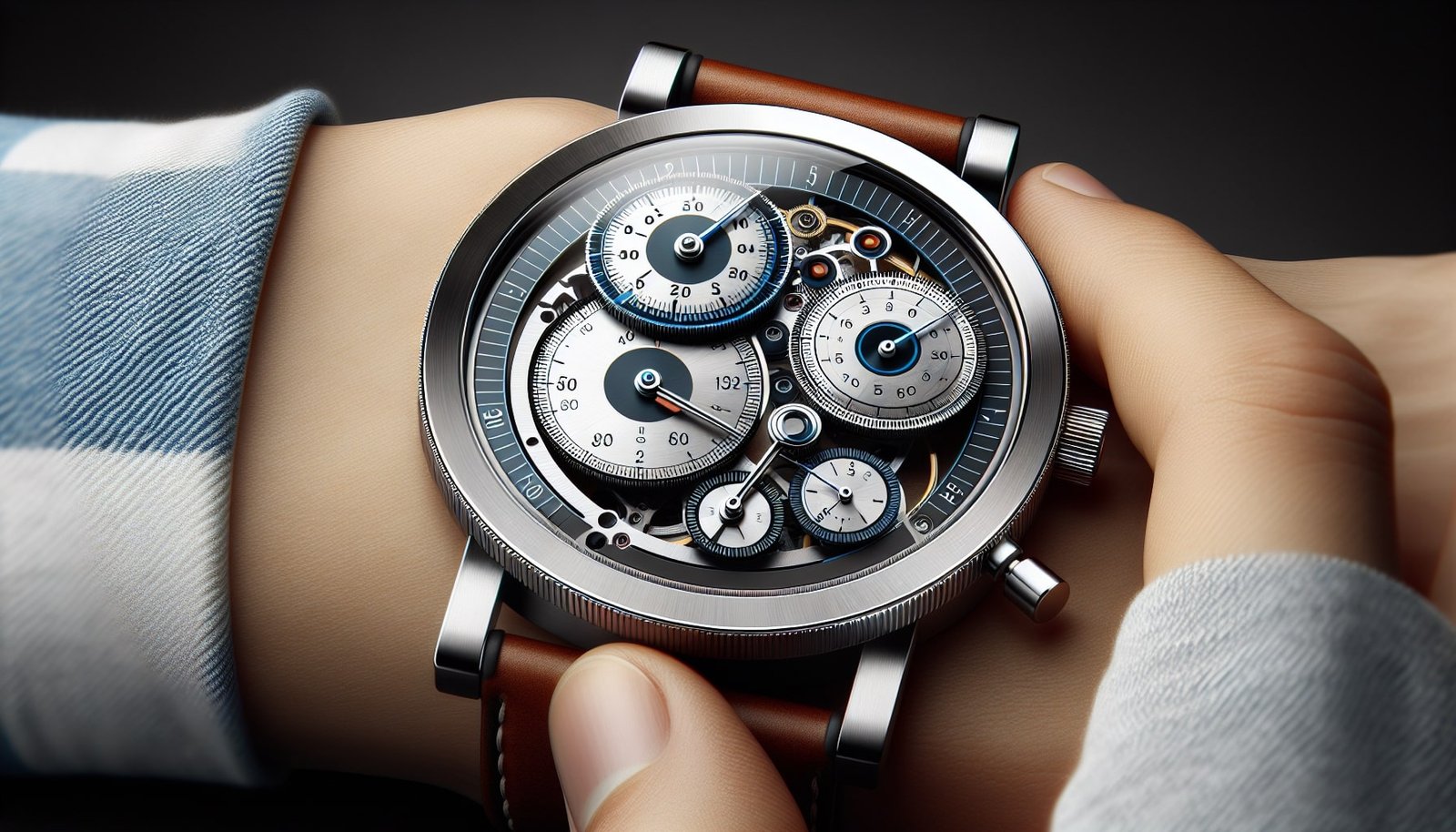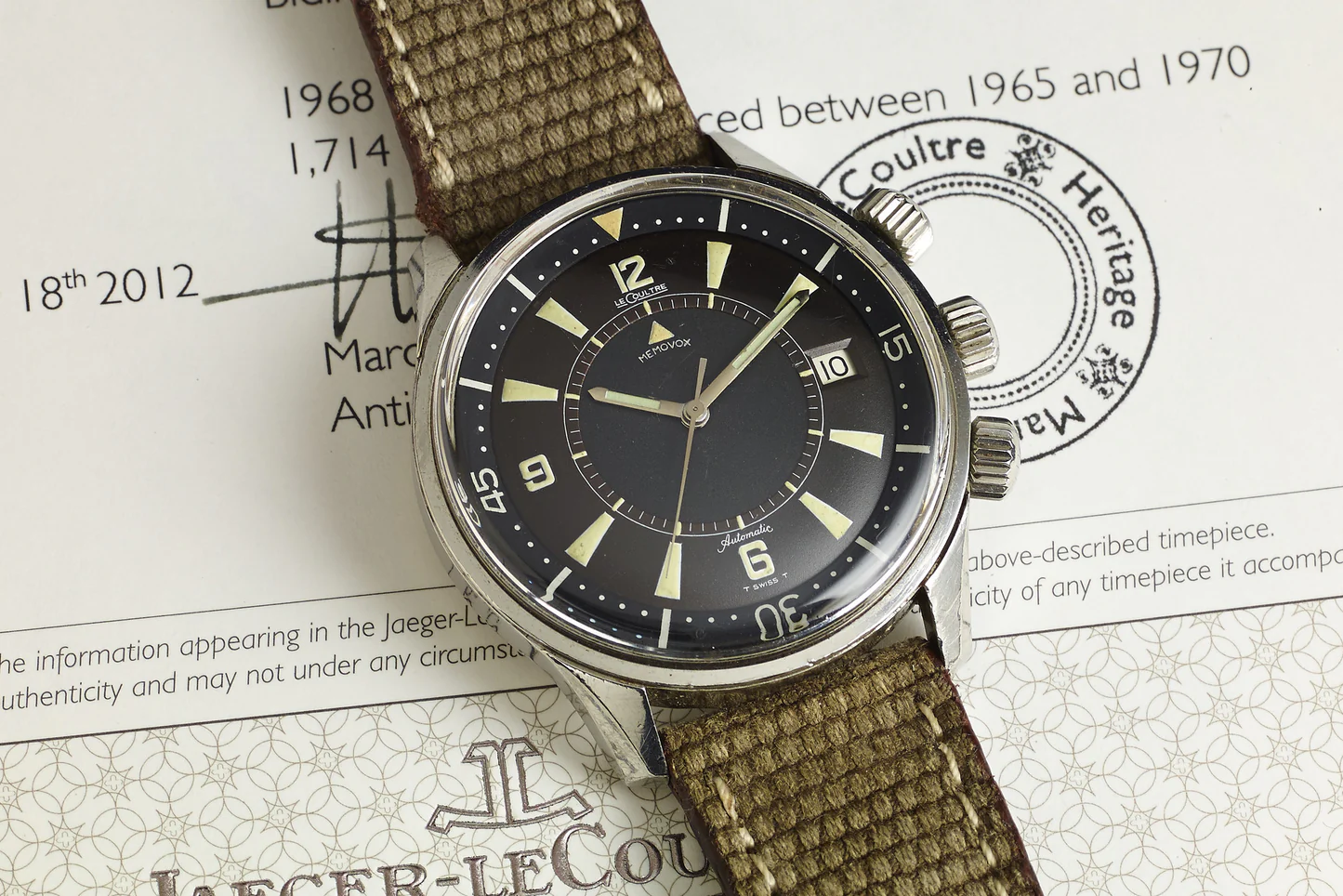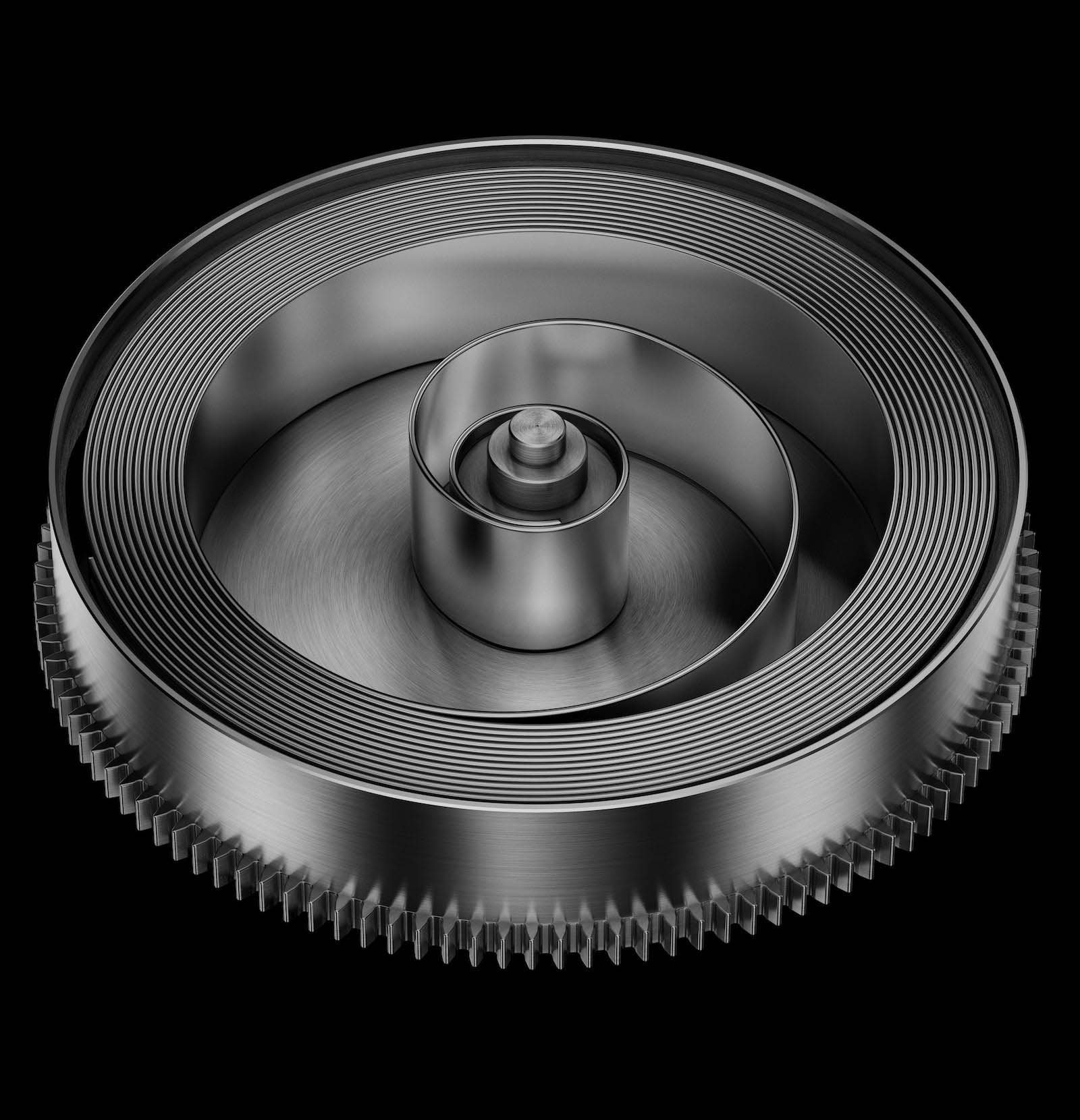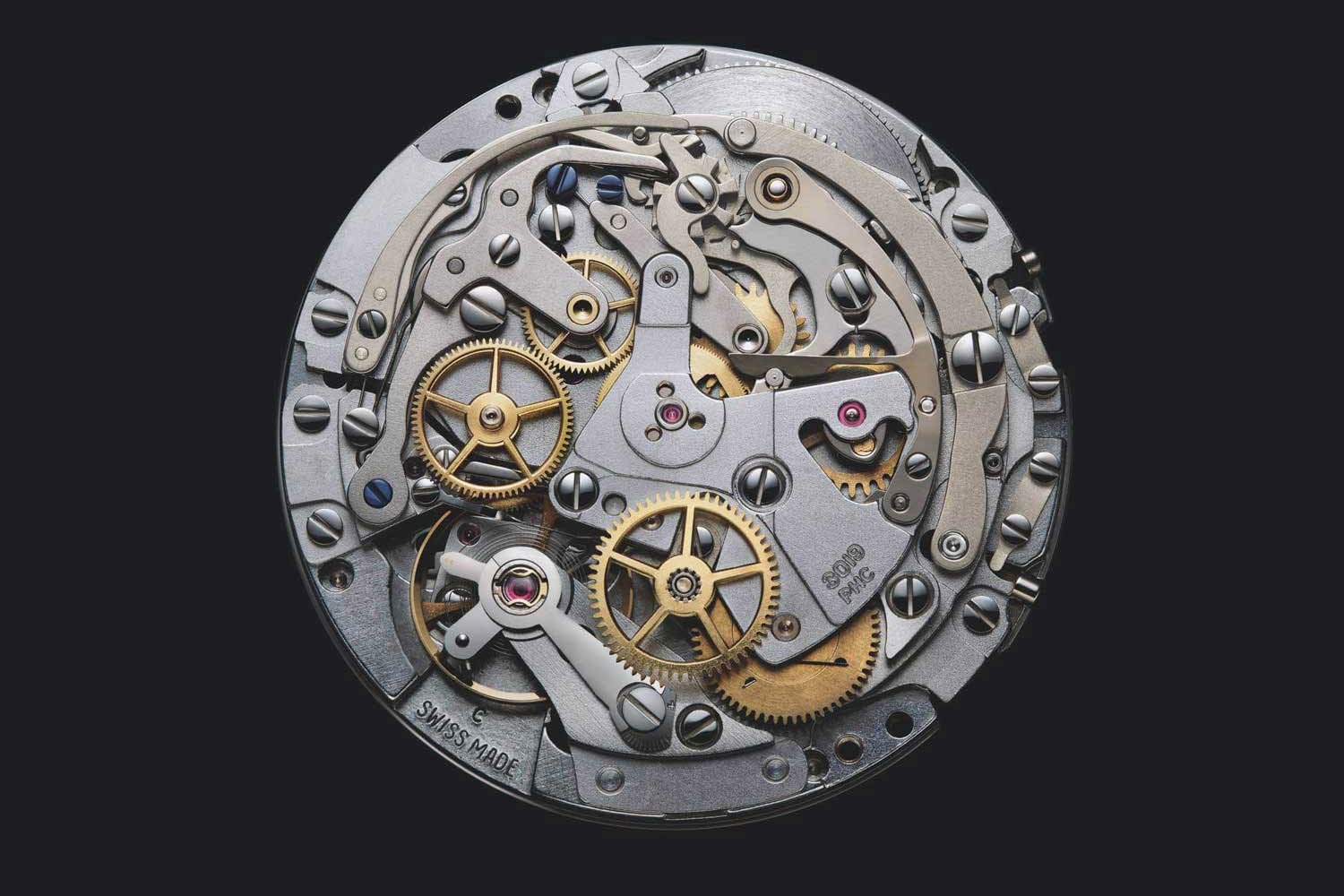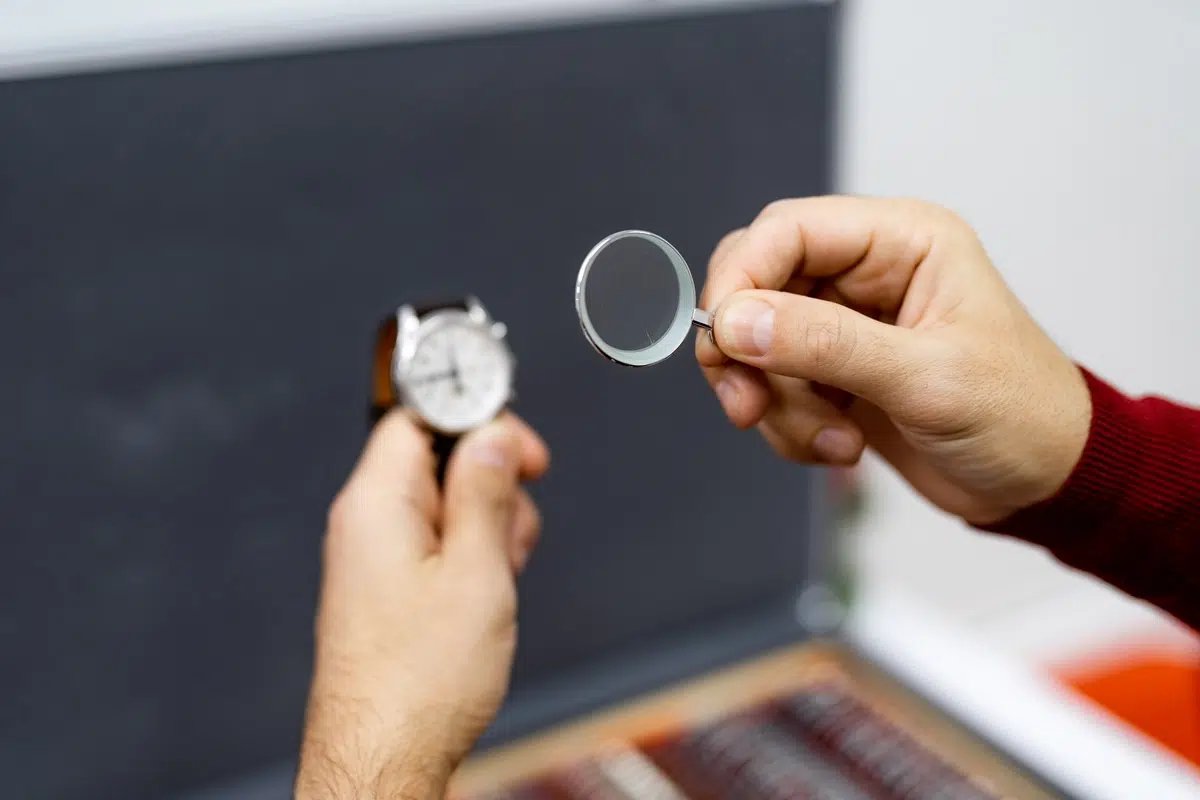Table of Contents
The sophistication of a watch often goes beyond its ability to tell time. Watches with three subdialsknown as chronographs, combine elegance with advanced functionality. These additional dials are far from being mere ornaments; they allow for the precise measurement of time intervals, adding a technical dimension to the age-old art of watchmaking. Whether for professional purposes, sporting activities or simply to appreciate the complex mechanics of a timepiece, secondary dials enrich the experience of their users. This article explores in depth the role of these auxiliary dials and how they can revolutionize the way you see and use a watch on a daily basis.
What is a chronograph and what are its advantages?
A chronograph is a watch designed with a specialized mechanism that allows it to measure time independently of the time display. Like a built-in stopwatch, it can be started, stopped and reset using pushers located on the side of the case. The presence of auxiliary dialsor sub-dials, allow a clear reading of the measured minutes and hours, while an additional central hand can indicate the chronographic seconds.
The advantages of having a chronograph on a watch are multiple. It offers precision in the time measurement during specific activities such as cooking, sports, or even professional tasks such as medicine or car racing. In addition, a chronograph can be certified as a chronometer, testifying to its high precision, as certified by a COSC certificate.
Chronographs are commonly used in everyday life to time events, monitor parking times or measure travel times. In the professional field, pilots, athletes or health professionals use them regularly for their respective activities.
How to read the 3 dials on your watch?
Each secondary dial has a dedicated function:
- The first dial, often positioned at 9 o’clock, is the minute counter of the chronograph and typically supports measurements of up to 30 minutes.
- The second dial, usually located at 6 o’clock, is the hour meter and can measure periods usually up to 12 hours.
- The third dial, located at 3 o’clock in most cases, is the small second and indicates the running seconds when the chronograph is not running.
To read the dials:
- Look at the main seconds hand in the center of the watch. It is often used for timing with the chronograph activated.
- Look at the auxiliary minute dial to read the minutes elapsed since the start of timing.
- Check the hour dial to determine elapsed hours if you have been timing for a long period of time.
- Do not confuse the small seconds with the chronograph seconds; this continues to function independently.
[Conseils pratiques] for effective reading:
- Practice reading dials at home to get your eye used to it.
- First use the chronograph in a quiet environment to fully understand how it works.
- Memorize the position and function of each dial for quick reading in the situation.
The seconds dial: is it really useful?
On a chronograph watch, the seconds dial plays a special role. It shows the seconds continuously, even when the chronograph is running. This feature is valuable for those who need to know the elapsed time precisely but also the exact time simultaneously.
However, some may find this dial superfluous, especially when they require the chronograph for very brief time measurements where minutes and hours are not critical. On the other hand, for activities that require precise knowledge of elapsed time and the current time without disturbing the measurement in progress, such as in some medical or technical professions, the seconds dial is essential.
During chronograph use, the seconds dial ensures that the user has a stable time reference, making it indispensable when precision is required in time tracking such as in tracking a race or monitoring cooking.
Why can a watch measure up to 12 hours with a dial?
The hour dial on a chronograph watch is a key element in tracking extended periods of time. It provides essential functionality for measuring times of up to twelve hours, with these hours accumulating on the dial as the chronograph is activated.
This capability is critical in situations where long duration events need to be timed, such as long distance athletic events, transcontinental flights, or extended scientific events. Being able to measure up to 12 hours gives users the flexibility to time activities without worrying about the limitations imposed by shorter durations.
Ultimately, this dial transforms a classic watch into a versatile tool capable of handling long-term time missions without relying on external devices, making chronograph watches essential accessories for professionals and precision enthusiasts alike.
What additional complications are found on the secondary dials?
In addition to basic timekeeping functions, chronograph watches can incorporate advanced complications on their subdials, making these timepieces even more versatile:
- The tachometer: Commonly placed on the bezel or around the dial, it measures the average speed over a known distance. Motorists and pilots appreciate it for calculating their pace accurately.
- The heart rate monitor: Present to quantify the heart rate, it finds its use in the medical environment or for athletes wishing to monitor their heart rate per minute.
- The rangefinder: This scale allows the calculation of the distance of a sound source based on the speed of sound, very practical for certain military or navigation uses.
- The date indicator: Often positioned in one of the dials, it offers a quick view of the date without disturbing the reading of the time.
- The moon phase: For astronomy enthusiasts, this complication illustrates the current lunar cycle.
These additional features significantly enrich the user experience of the watch, transforming it into a versatile measuring instrument suitable for various professional or everyday situations.
3-Dial Watches: Just for Style or Really Functional?
The presence of three subdials on a watch fuels the debate between aesthetics and functionality. On the one hand, the complex and sophisticated appearance of such a watch can be attractive to fashion and watch lovers, lending a touch of elegance and a strong character to the overall appearance of the wrist.
On the other hand, these dials do not have a simple decorative value; they offer additional information that can be essential for organizing one’s time or making specific measurements. In addition, for those whose professions require precise time measurement, such as pilots, athletes or health professionals, these watches are essential tools.
In short, three-dial watches derive their reputation from this duality between their captivating design and their high functional capacity, which makes them attractive to a wide range of users with diverse needs and preferences.
How to maintain and preserve the functionality of the secondary dials?
Regular maintenance of your chronograph watch is crucial to ensure the accuracy and durability of the subdials. Here are some essential tips:
- Avoid shocks which can damage the internal mechanisms of the watch and affect the accuracy of the chronograph.
- Protect your watch from prolonged exposure to water and humidity, especially if it is not waterproof, to prevent oxidation of internal components.
- Gently clean the case and glass with a soft, dry cloth to maintain the aesthetics and readability of the dials.
- Store your watch in a dry, temperate place to avoid thermal variations which can alter its mechanical functions.
Professional service is required for in-depth maintenance. Precise adjustment of hands, checking of gaskets and inspection of the movement are tasks that should be entrusted to qualified watchmakers.
By regularly maintaining your watch and having it professionally examined at the slightest doubt about its operation, you will not only ensure its good condition in the long term but also the precision of its secondary dials.
What are the alternatives to chronograph watches?
Some users are looking for specific features or a different design from chronograph watches while still wanting to benefit from time measurement. Several alternatives exist:
- Multifunction watches: These watches can include alarms, timers, calendars, and sometimes even functions like an altimeter or barometer, without the complex design of a chronograph.
- Diving watches: Designed to withstand underwater pressure, they often include a rotating dial to measure immersion time, with maximized readability.
- Smartwatches: Smartwatches offer a wide range of time tracking features, as well as fitness apps, notifications, and many other technological features.
- Watches with simple complications: Watches with date, moon phase or power reserve for those who appreciate watch complications but in a more sober format.
Each alternative has its pros and cons that need to be weighed based on intended use and personal preferences. It’s up to you to choose the watch that best fits your lifestyle and functionality needs.
